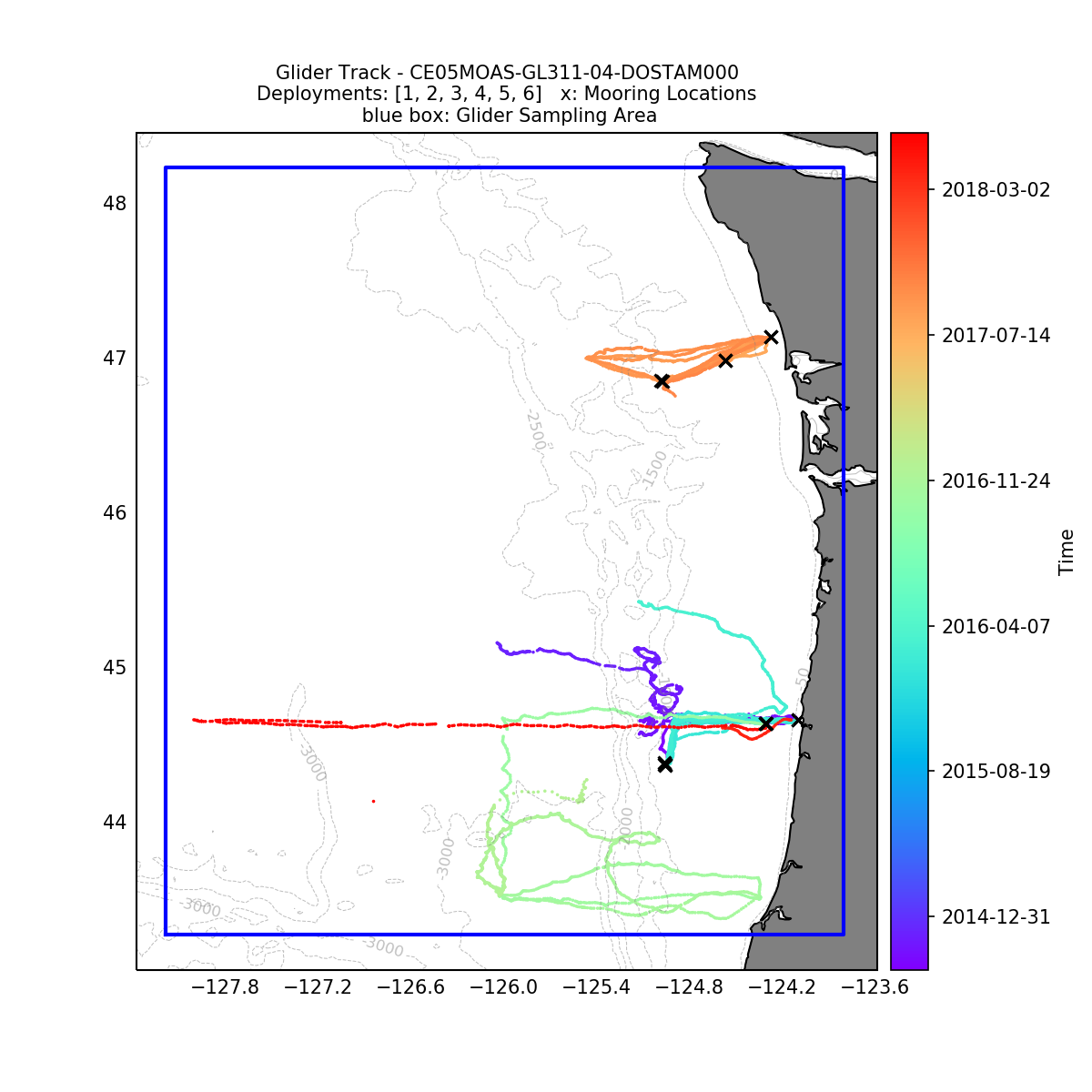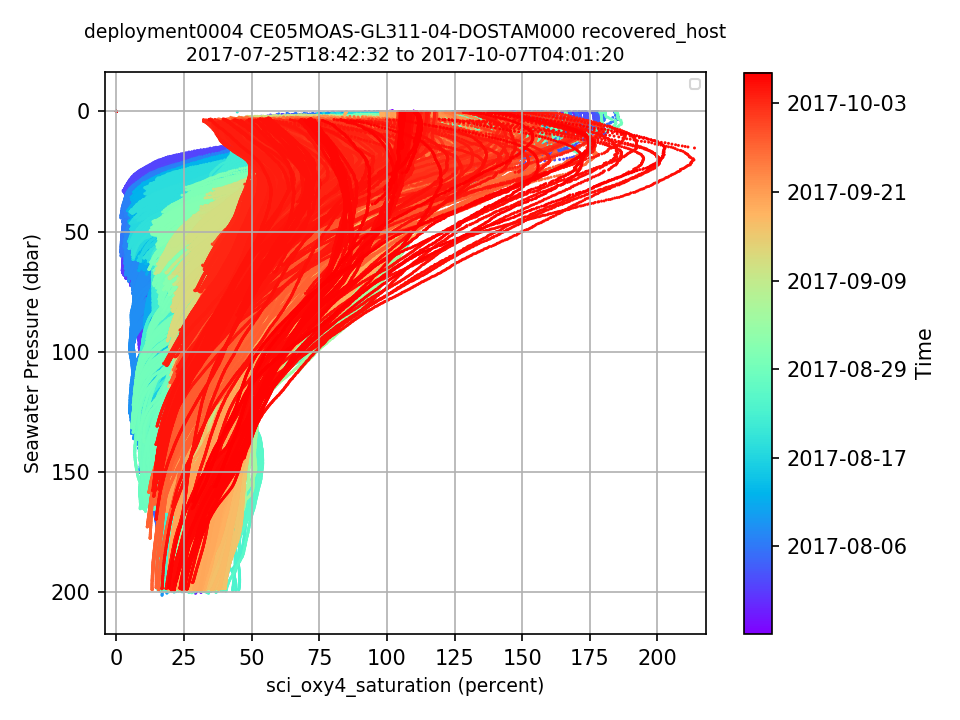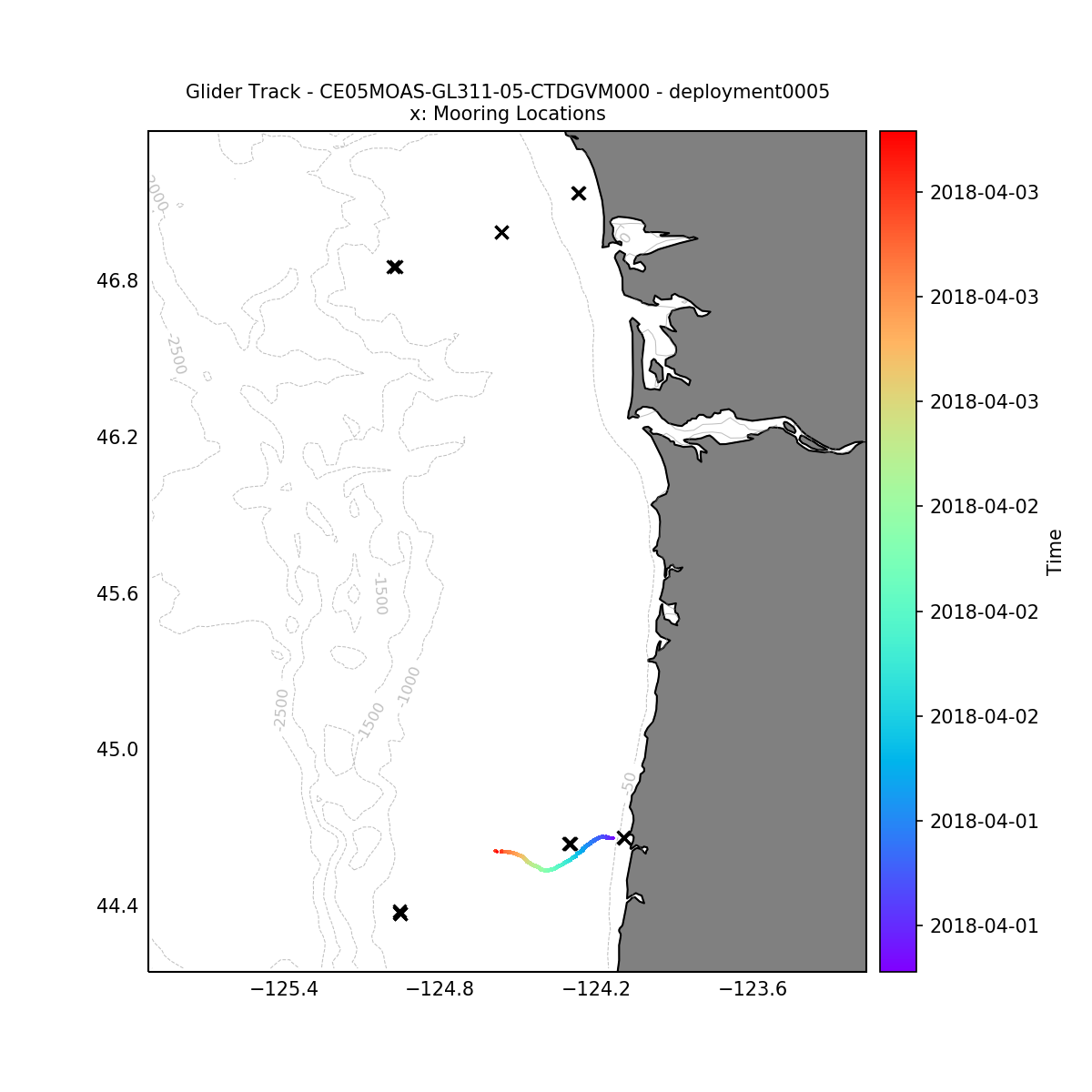Dissolved Oxygen
- Reference Designator
- CE05MOAS-GL311-04-DOSTAM000
- Review Status
- Review Complete
- Note
- Depth
- 0 to 1,000m
- Class
- DOSTA (Dissolved Oxygen Stable Response)
- Make / Model
- Aanderaa / Optode 4831
Dataset Reviews Last processed: 5/7/19, 5:21 PM
| Dep. | Preferred Method | Stream | DD | FD | SG | EG | Gaps | GD | TS | Rate (s) | Pressure Comp. | Time Order | Valid Data | Missing Data | Data Comp. | Missing Coords. | Review |
|---|---|---|---|---|---|---|---|---|---|---|---|---|---|---|---|---|---|
| 1 | recovered_host | 62 | 61 | 0 | 0 | 0 | 0 | 1,684,805 | 2 | 200 / 195 | Complete | ||||||
| 2 | recovered_host | 69 | 52 | 0 | 16 | 0 | 0 | 911,546 | 2 | 200 / 195 | Complete | ||||||
| 3 | recovered_host | 88 | 76 | 0 | 11 | 0 | 0 | 1,555,476 | 2 | 200 / 196 | Complete | ||||||
| 4 | recovered_host | 75 | 75 | 0 | 0 | 0 | 0 | 1,707,440 | 2 | 200 / 201 | Complete | ||||||
| 5 | recovered_host | 4 | 3 | 0 | 0 | 0 | 0 | 50,652 | 2 | 200 / 139 | Complete | ||||||
| 6 | recovered_host | 23 | 18 | 0 | 0 | 1 | 5 | 383,710 | 2 | 1000 / 995 | Complete |
Test Notes
All good!
Data Coverage
| Deployment: | 1 | 2 | 3 | 4 | 5 | 6 |
|---|---|---|---|---|---|---|
| 98% | 75% | 86% | 100% | 75% | 78% |
Deployment Map

System Annotations Show
No annotations yet.
Review Notes
| Metadata | Start Date | End Date | Comment |
|---|---|---|---|
|
CE05MOAS |
Bad altimeter pings are apparent in many deployments of the coastal gliders. A few example plots are attached - m_water_depth plotted as semi-transparent bathymetry. By Lori Garzio, on 5/10/19 |
||
|
CE05MOAS-GL311 |
Data look suspect for several different time points and deployments for this glider. For example, zoomed in plots from 11/12/2014 - 11/14/2014 show what looks to be a time lag in the dissolved oxygen data? The glider not going to the surface shows up in the overall deployment 1 graph as a band around 50 dbar. The deployment 4 overall graph has a similar banding feature around 5 dbar. Zoomed in plots from 10/1/2017 - 10/3/2017 depicts very high DO concentrations at the surface on the first downcast. The corresponding temperature data from the CTD has a lower temperature value at the very beginning of each downcast (easily seen in the profile and xsection plots attached). Similar features are seen in other deployments of other gliders, but these were the most pronounced examples I have seen so far. Some possible issues could be a time lag, biofouling, sensor failure, etc. By Lori Garzio, on 5/13/19 |
||
|
CE05MOAS |
Glider optodes typically exhibit a sensor lag of 20-25 seconds. Example attached of 3 consecutive down and up casts for CE05MOAS-GL312-04-DOSTAM000 on 7/8/2014 showing a typical measurement time lag. Profiles should be analyzed for individual time lags and data should be adjusted. OOI doesn't necessarily need to make the adjustment but users should be aware of the issue. By Lori Garzio, on 5/14/19 |
||
|
CE05MOAS-GL311-04-DOSTAM000 Deployment: 2 |
|||
|
CE05MOAS-GL311 Deployment: 2 |
|||
|
CE05MOAS-GL311-04-DOSTAM000 Deployment: 4 |
|||
|
CE05MOAS-GL311-04-DOSTAM000 Deployment: 4 |
Suspect bands around 5 dbar throughout the entire deployment, but more pronounced towards the end. Zoomed plots from 10/1/2017 to 10/3/2017 here: https://marine.rutgers.edu/cool/ooi/data-eval/data_review/CE/CE05MOAS/CE05MOAS-GL311/suspect_data/2017-10-01to2017-10-03_DOSTA/ By Lori Garzio, on 5/13/19 |
||
|
CE05MOAS-GL311 Deployment: 5 |
|||
|
CE05MOAS-GL311 Deployment: 6 |






